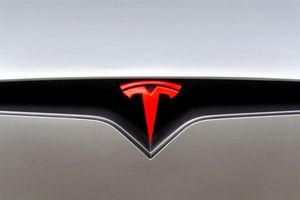
The major US stock indexes—the Dow Jones Industrial Average, S&P 500, and Nasdaq Composite—have concluded a tumultuous November with a powerful rebound, erasing mid-month losses and reigniting investor enthusiasm. This late-November surge, primarily propelled by blockbuster earnings from tech giant Nvidia and a nuanced jobs report, signals a renewed confidence in the underlying strength of the American economy and the transformative power of artificial intelligence. The immediate implications point to a reinforcing of the tech sector's dominance as a market driver, though lingering questions about valuation and Federal Reserve policy continue to loom.
This latest rally underscores a persistent theme in the current financial landscape: the outsized influence of a select group of technology companies. While the market grapples with the Federal Reserve's delicate balancing act between inflation control and economic growth, the sheer momentum generated by innovation in areas like AI continues to captivate investors, pushing indices to impressive year-to-date gains and setting the stage for a potentially strong close to 2025.
A Volatile November Culminates in a Powerful Rebound
November 2025 has been a rollercoaster for the US stock market, commencing with an extension of a robust six-month winning streak. The initial days of the month saw the S&P 500, Nasdaq Composite, and Dow Jones Industrial Average continue their upward trajectory, buoyed by strong corporate earnings and easing inflation concerns. However, this optimism was swiftly challenged around mid-month, specifically between November 13th and 18th, as fears of an "AI bubble" and high technology valuations triggered a significant sell-off. The Dow plummeted nearly 800 points on November 13th, with the S&P 500 and Nasdaq Composite experiencing similar sharp declines, primarily led by the so-called "Magnificent Seven" tech stocks.
The market narrative shifted dramatically towards the end of the third week of November. On November 19th and 20th, a powerful rebound took hold, with all three major indices snapping their losing streaks and posting substantial gains. This resurgence was largely spearheaded by Nvidia (NASDAQ: NVDA), whose quarterly results far surpassed analyst expectations, reporting adjusted earnings of $1.30 per share and a staggering 62% year-over-year revenue increase to $57 billion. This performance served as a potent antidote to the "AI bubble" fears, reaffirming the substantial and immediate financial returns being generated by the AI revolution.
Further contributing to the late-month rally was a delayed September jobs report, which, despite an uptick in the unemployment rate to 4.4% and softer wage growth, showed a healthier-than-anticipated 119,000 jobs added. Key players in this market dynamic include the aforementioned tech giants driving AI innovation, the Federal Reserve whose future policy decisions remain a critical point of speculation, and individual investors navigating unprecedented valuations. The initial market reaction to Nvidia's earnings was overwhelmingly positive, with its stock surging and pulling the broader tech sector, and subsequently the entire market, higher.
Companies Navigating the AI Wave: Winners and Losers in a Tech-Driven Market
The current tech-driven market rally, largely fueled by the AI revolution, is creating a distinct bifurcation in the corporate landscape, elevating companies at the forefront of AI innovation while posing significant challenges for those unable to adapt or invest strategically. The "Magnificent Seven" tech giants, having regained momentum after earlier volatility in 2025, are once again leading the charge, their fortunes intrinsically linked to the burgeoning AI infrastructure spending and integration across industries.
Nvidia (NASDAQ: NVDA) stands out as the unequivocal winner, with its GPUs being the indispensable backbone of AI training and inference. Its recent "blow-out" Q3 earnings, showcasing "incredible" demand for its Blackwell AI chips, have propelled its market valuation to nearly $5 trillion, solidifying its position as the face of the AI revolution. Similarly, Microsoft (NASDAQ: MSFT) is a strong beneficiary, with robust AI demand for its Azure cloud services driving it past a $4 trillion market capitalization in July 2025. Its substantial and increasing AI spending translates directly into business growth and resilience. Alphabet (NASDAQ: GOOGL) is also well-positioned, with its Gemini 3 AI model launch and significant capital expenditures of $91-$93 billion in 2025 for data centers and AI-specific hardware, pushing its stock to the $300 mark.
Other members of the "Magnificent Seven" are also reaping rewards. Amazon (NASDAQ: AMZN), through its Amazon Web Services (AWS) division, is experiencing robust AI-driven growth, committing $100 billion for AI infrastructure in 2025. Meta Platforms (NASDAQ: META) is aggressively integrating AI into its product suite, with CEO Mark Zuckerberg viewing it as a "strategic advantage," evidenced by doubled capital spending in Q2 2025 for the AI arms race. Even Apple (NASDAQ: AAPL) and Tesla (NASDAQ: TSLA), after initial struggles, are contributing to the group's advance, with Apple's anticipated AI integration across its ecosystem and Tesla's AI-driven autonomous driving technology poised to benefit. Beyond these giants, the entire AI ecosystem, including semiconductor manufacturers like Advanced Micro Devices (NASDAQ: AMD), Intel (NASDAQ: INTC), memory producers like Micron Technology (NASDAQ: MU), and fabrication powerhouses like Taiwan Semiconductor Manufacturing Company (NYSE: TSM), are poised for significant gains due to increased demand for AI-specific hardware and infrastructure.
Conversely, companies likely to face headwinds are those that fail to strategically embrace and invest in AI. Businesses across various sectors that view AI as a mere "tech add-on" rather than a core strategic imperative risk falling behind competitors who leverage AI for efficiency, innovation, and customer satisfaction. Furthermore, concerns about an "AI bubble" persist, meaning companies whose valuations are primarily driven by speculative AI potential, without a clear path to tangible profits or cash flow, could face corrections if investor sentiment shifts or if the expected returns on AI investments do not materialize. Traditional IT service providers not focused on AI solutions may also see budgets tighten as corporate capital increasingly flows towards AI infrastructure, highlighting the critical need for adaptation in this rapidly evolving market.
The Broader Canvas: AI's Transformative Reach and Regulatory Crosscurrents
The current AI-driven stock market rally is more than just a fleeting surge; it represents a fundamental shift in broader industry trends, signaling the profound impact of technological innovation as a primary engine for long-term economic growth. This period is characterized as the "buildout" phase of AI evolution, where massive capital expenditures are being poured into essential infrastructure—semiconductors, cloud computing, and data centers—to support the accelerating demand for AI capabilities. This isn't merely about software; it's a monumental investment in the physical backbone of the future economy, with major tech players like the "Magnificent Seven" increasing their capital expenditures significantly for AI infrastructure. The expectation is a sharp improvement in AI monetization throughout 2025, with cloud growth accelerating and AI adoption broadening across virtually all industries.
The ripple effects of this AI boom are creating a dynamic and often challenging landscape for both competitors and partners. Companies across the entire AI supply chain are experiencing unprecedented demand. Semiconductor manufacturers such as Advanced Micro Devices (NASDAQ: AMD), Intel (NASDAQ: INTC), Broadcom (NASDAQ: AVGO), Arm Holdings (NASDAQ: ARM), Micron Technology (NASDAQ: MU), Taiwan Semiconductor Manufacturing Company (NYSE: TSM), and SK Hynix (KRX: 000660) have seen substantial gains. Cloud computing providers and data center operators are witnessing surging demand, leading to rapid expansion and innovation. The hyperscalers—Microsoft (NASDAQ: MSFT), Amazon (NASDAQ: AMZN), Alphabet (NASDAQ: GOOGL), and Meta Platforms (NASDAQ: META)—as Nvidia's largest customers, are direct beneficiaries. However, this also intensifies pressure on competitors like AMD and Intel to accelerate their own AI strategies and remain competitive. The tech surge is also driving increased merger and acquisition (M&A) activity, as tech giants strategically acquire smaller firms to bolster their cloud and AI capabilities, hinting at a new era of market concentration.
On the regulatory front, the rapid advancement of AI is attracting significant scrutiny. A key development in 2025 has been the defeat of Republican efforts in Congress to impose a 10-year moratorium on state-level AI regulation, empowering individual states to pursue their own AI restrictions. This shift from a largely hands-off approach to more active legislative efforts is compounded by the U.S. Securities and Exchange Commission (SEC) launching an AI task force in August 2025 to enhance its regulatory oversight related to AI. Globally, over 69 countries are drafting more than 1,000 AI-related policies covering data usage, algorithmic transparency, and ethical AI, making compliance a business-critical priority for AI startups.
Historically, the current AI-driven stock market rally draws frequent comparisons to the dot-com bubble of the late 1990s and early 2000s, both periods marked by "exuberance around the commercialization of a new technology" and explosive gains concentrated in a few high-flying companies. The S&P 500's cyclically adjusted price-to-earnings (CAPE) ratio, hitting 40 in September 2025, mirrors levels seen just before the dot-com crash. However, crucial distinctions exist: today's dominant tech companies are generally more established and profitable, with stronger underlying fundamentals and less extreme valuations compared to many speculative dot-com era startups. The current AI rally's returns are largely tied to companies with real earnings power, suggesting a more robust foundation despite some recent volatility.
What Comes Next: Navigating the AI Frontier
The trajectory of the US stock market rally, particularly within the AI sector, stands at a pivotal juncture as November 2025 draws to a close. The short-term outlook suggests that AI will continue to be a primary market driver, refining algorithmic trading, enhancing data analysis, and enabling personalized investment tools. The market is likely to remain bifurcated, with "AI winners"—companies deeply embedded in foundational AI technology or successfully integrating AI—continuing to exhibit strong earnings growth. Robust earnings from key players like Nvidia (NASDAQ: NVDA) have recently helped restore a tentative sense of calm, bolstering risk assets and extending the rally. However, the short term will also see continued scrutiny over whether AI companies can truly justify their sky-high valuations, given the massive infrastructure spending and the fact that many AI developments have yet to turn a profit.
Looking further ahead, the long-term possibilities for the AI sector and its impact on the stock market are overwhelmingly positive, with projections of transformative growth. The global AI market, valued at approximately $391 billion in 2025, is projected to quintuple over the next five years, potentially reaching $1.8 trillion by 2030. Experts anticipate AI will drive a "4th industrial revolution," supercharging economic growth through a productivity boom that translates into stronger corporate growth and profitability. By 2030, "agentic" AI—systems capable of completing loosely defined tasks autonomously—is expected to become a fundamental element, leading to deeper integration of AI across finance, healthcare, and product development. Robotics, particularly humanoid robotics, is also poised to be a transformative frontier, potentially reshaping global labor markets and unlocking trillions in value.
To navigate this dynamic landscape, companies must make strategic pivots, moving beyond pilot phases to deeply integrate AI into their core operations, demonstrating tangible returns on investment (ROI), and investing in workforce reskilling. Investors, meanwhile, should consider diversification beyond AI mega-caps, focus on fundamentals and clear ROI, and identify companies building global AI infrastructure and enterprise data ecosystems. Market opportunities abound in AI infrastructure, specialized AI applications, enterprise AI integration, and physical AI/robotics. However, significant challenges persist, including the risk of an "AI bubble," market concentration, regulatory uncertainty, geopolitical competition for tech dominance, and potential job displacement from AI automation. The coming years will reveal whether the current enthusiasm is a sustainable growth wave or if a period of reckoning awaits.
Wrap-up: Assessing the Market's AI-Powered Future
The late-November surge in major US stock indexes, driven primarily by the relentless advance of artificial intelligence and the stellar performance of tech giants like Nvidia (NASDAQ: NVDA), underscores a pivotal moment in financial markets. The key takeaway is the undeniable and accelerating impact of AI, not just as a technological marvel, but as a profound economic driver shaping corporate strategies, investment flows, and regulatory landscapes. While the market has demonstrated resilience, bouncing back from mid-month valuation concerns, the concentration of gains within a few AI-centric mega-caps like Microsoft (NASDAQ: MSFT), Alphabet (NASDAQ: GOOGL), and Amazon (NASDAQ: AMZN) remains a critical point of discussion.
Moving forward, the market's trajectory will hinge on a delicate balance: the realization of tangible returns on the massive AI infrastructure investments versus the persistent concerns about potentially overheated valuations. The "buildout" phase of AI will continue to fuel demand for semiconductors, cloud services, and data centers, creating robust opportunities for companies within this ecosystem. However, companies across all sectors must adapt, deeply integrating AI into their operations and demonstrating clear ROI to thrive. Regulatory bodies, both domestically and globally, are intensifying their oversight of AI, introducing new compliance complexities and ethical considerations that will shape the industry's future.
For investors, the coming months will require discerning judgment. While the long-term prospects for AI-driven growth appear robust, with projections of significant contributions to global GDP, vigilance against speculative excesses is crucial. Investors should watch for sustained earnings growth beyond the current leaders, evidence of AI's productivity benefits translating into broader economic gains, and the evolution of regulatory frameworks that foster innovation while mitigating risks. Diversification and a focus on companies with strong fundamentals and a clear path to AI monetization, rather than just hype, will be paramount. The AI revolution is undoubtedly transforming the market, but its path will likely be marked by both continued innovation and periods of reassessment.
This content is intended for informational purposes only and is not financial advice






